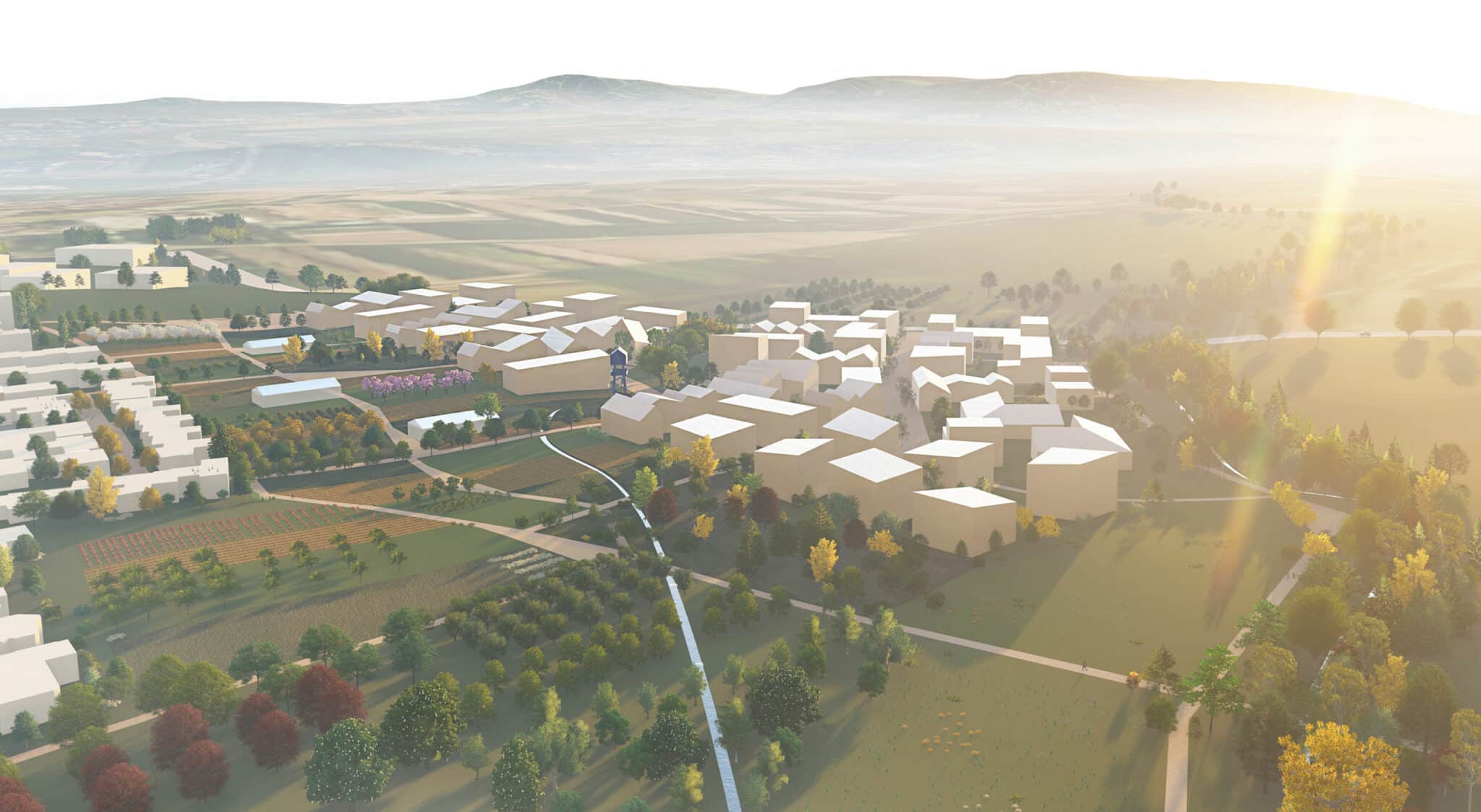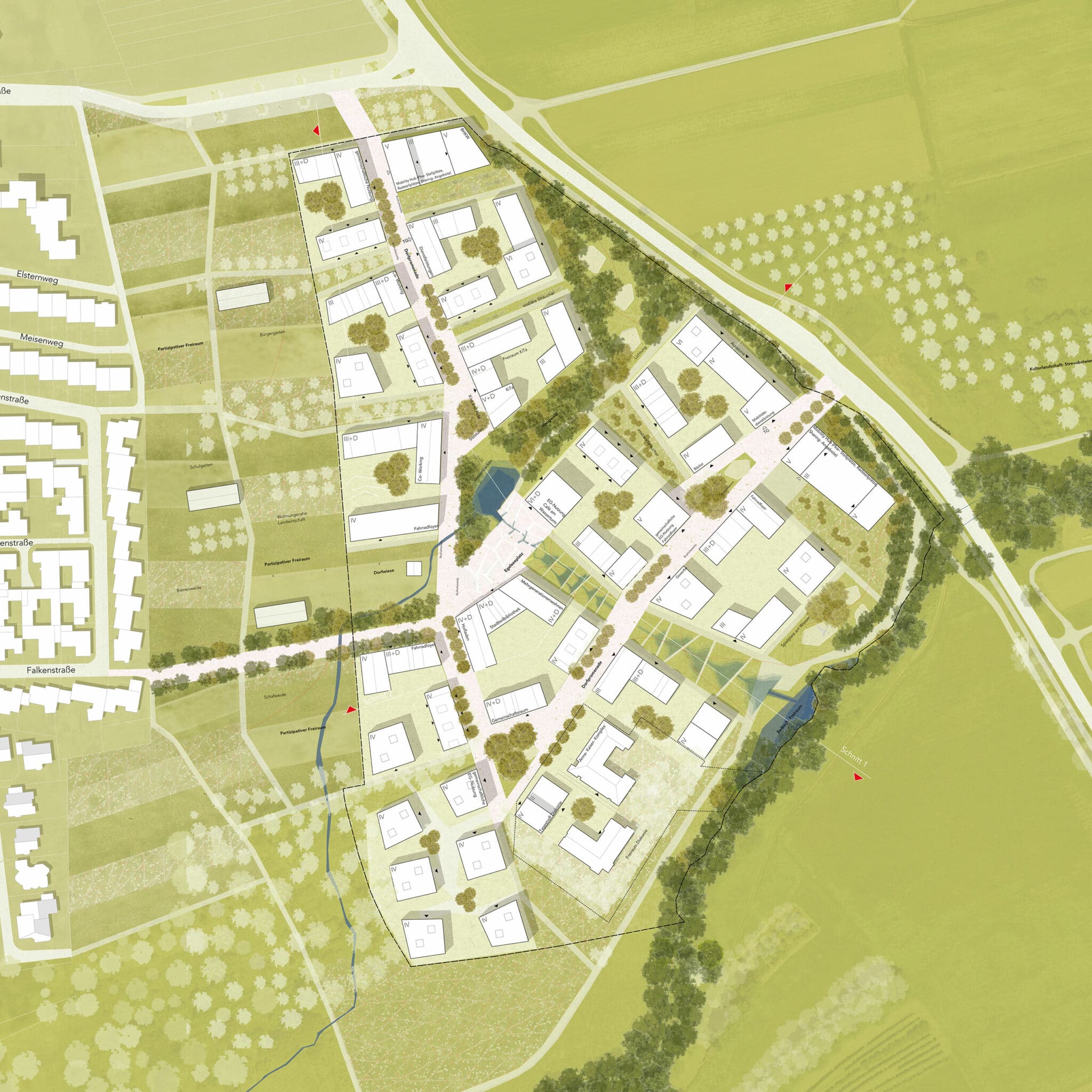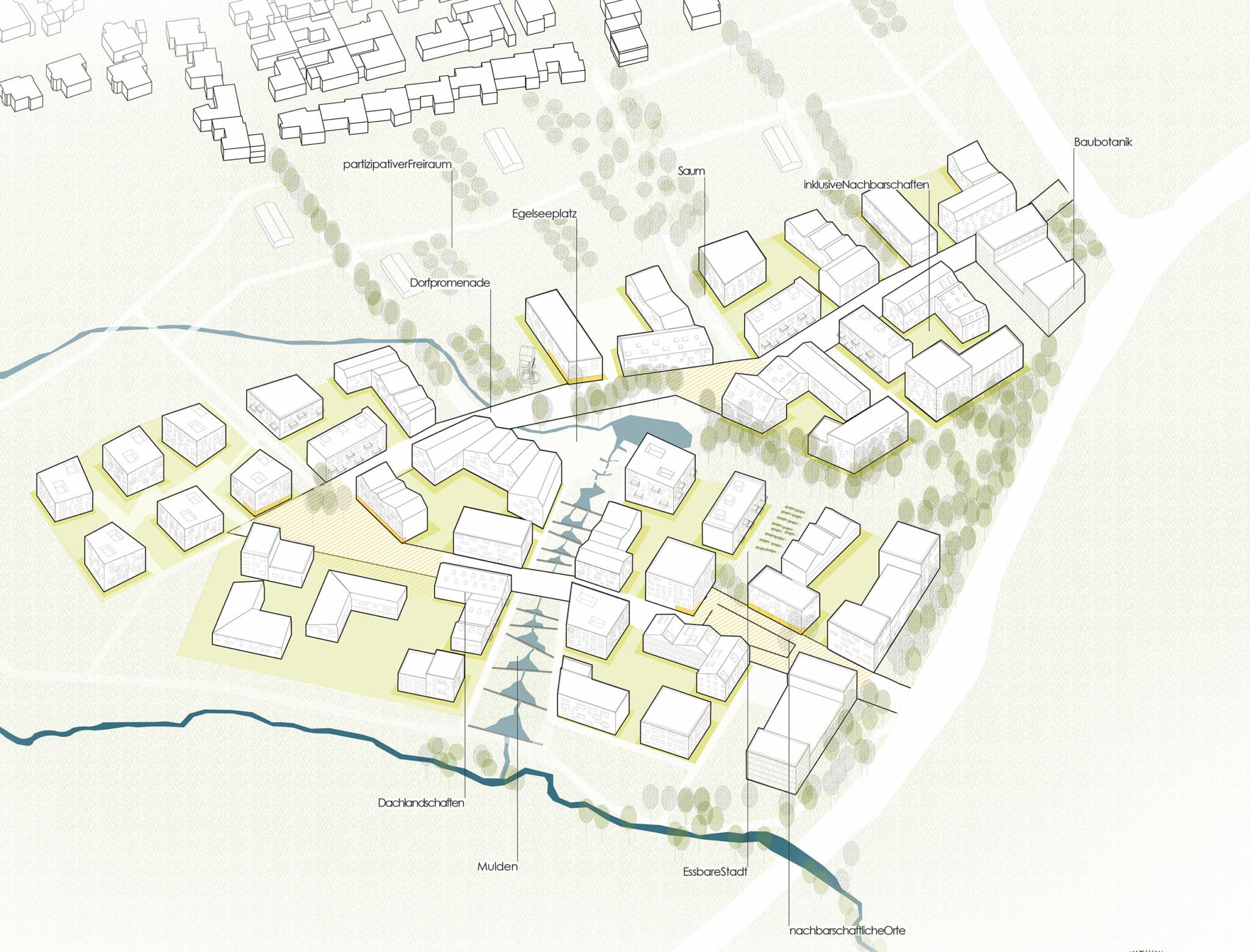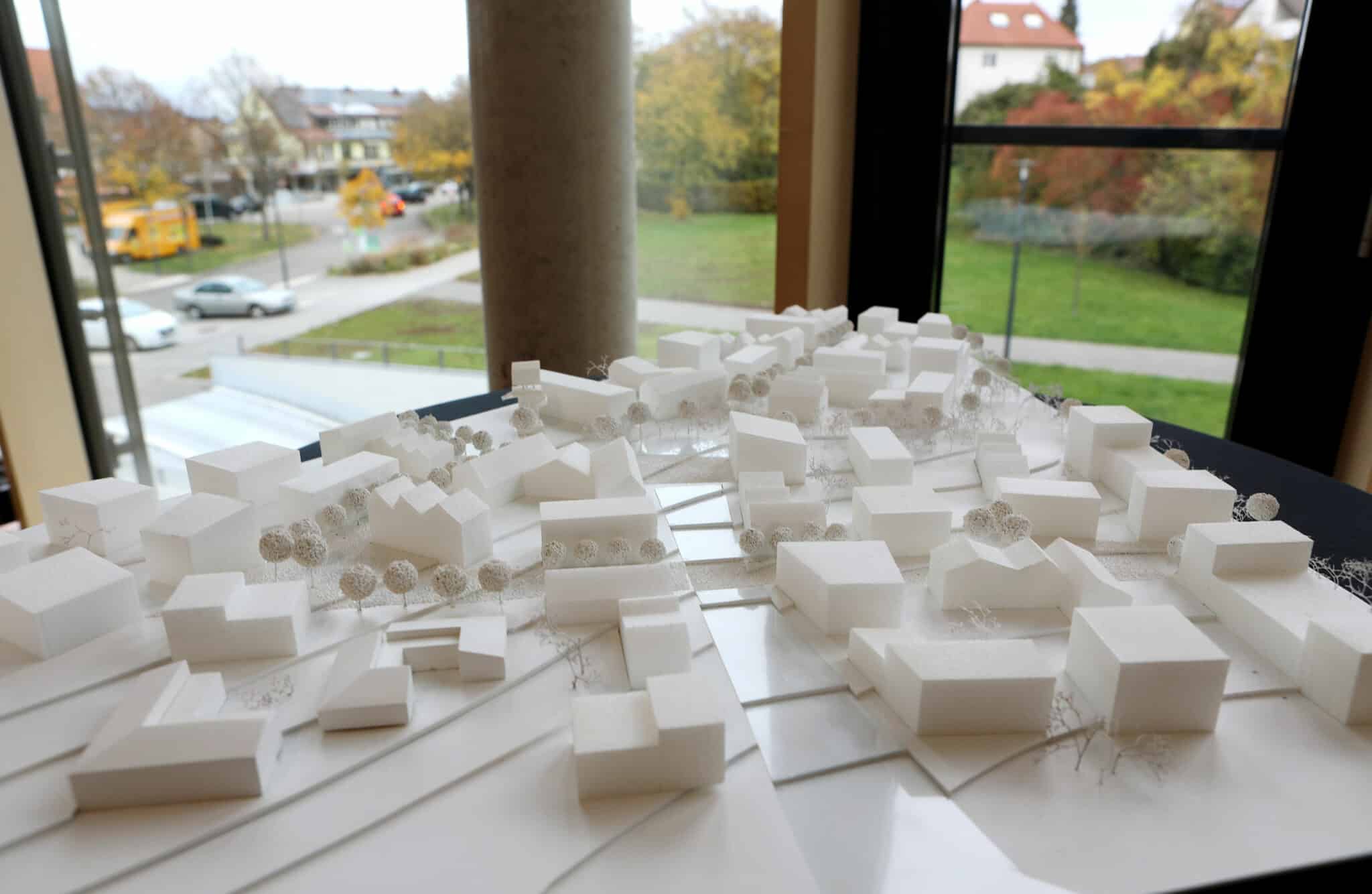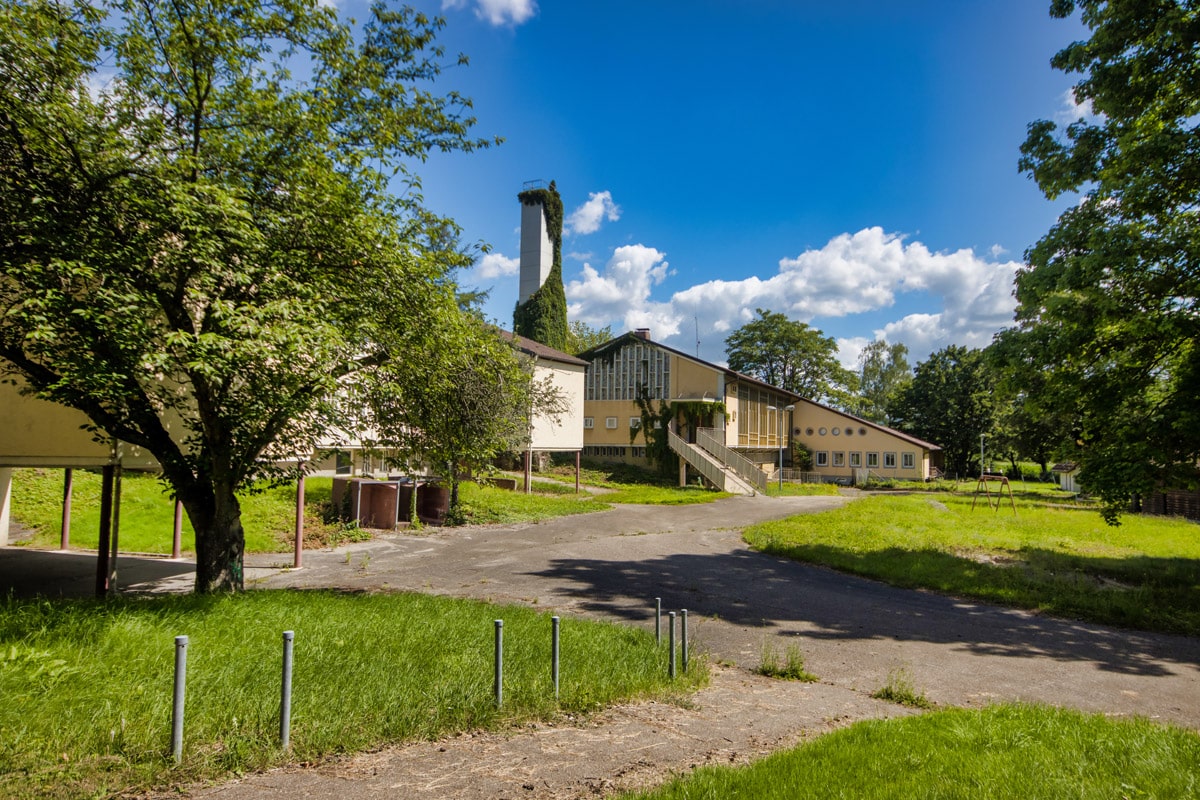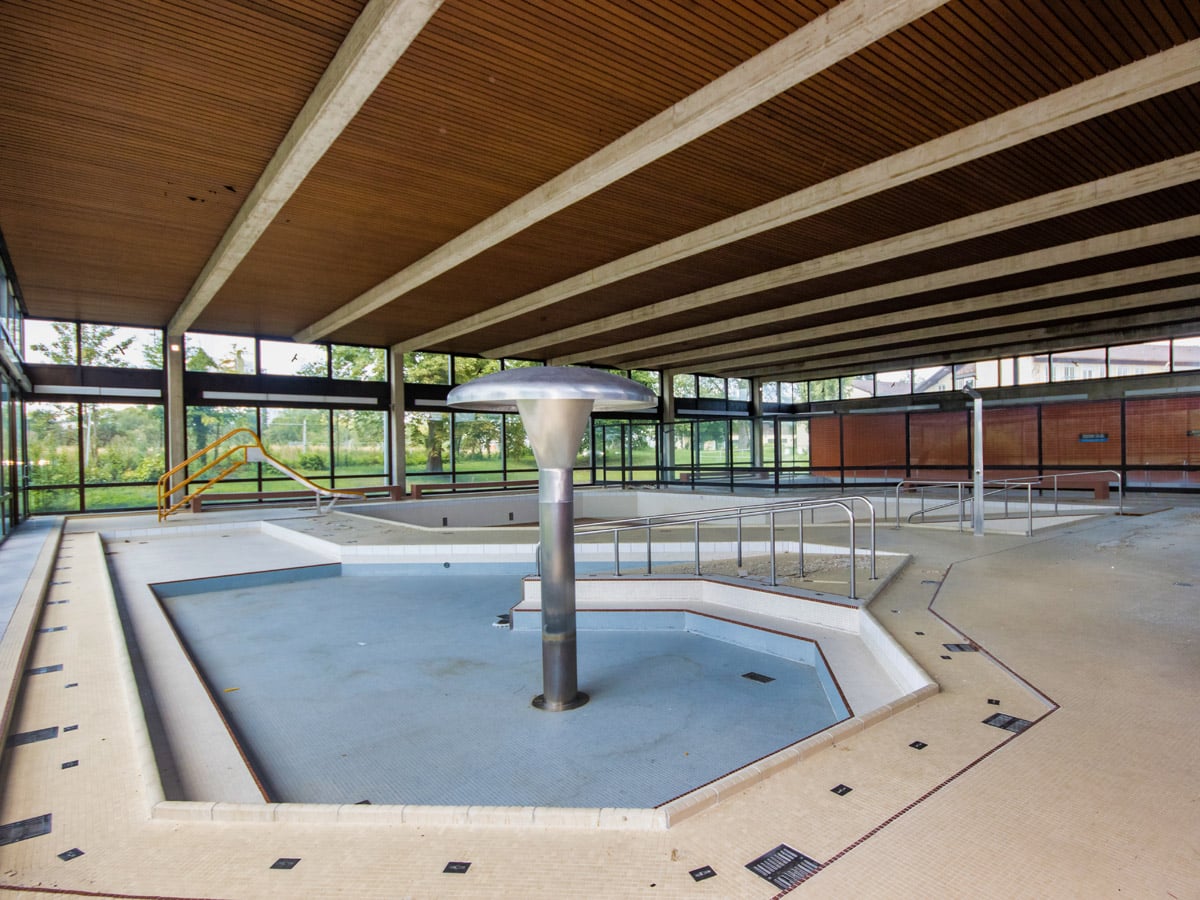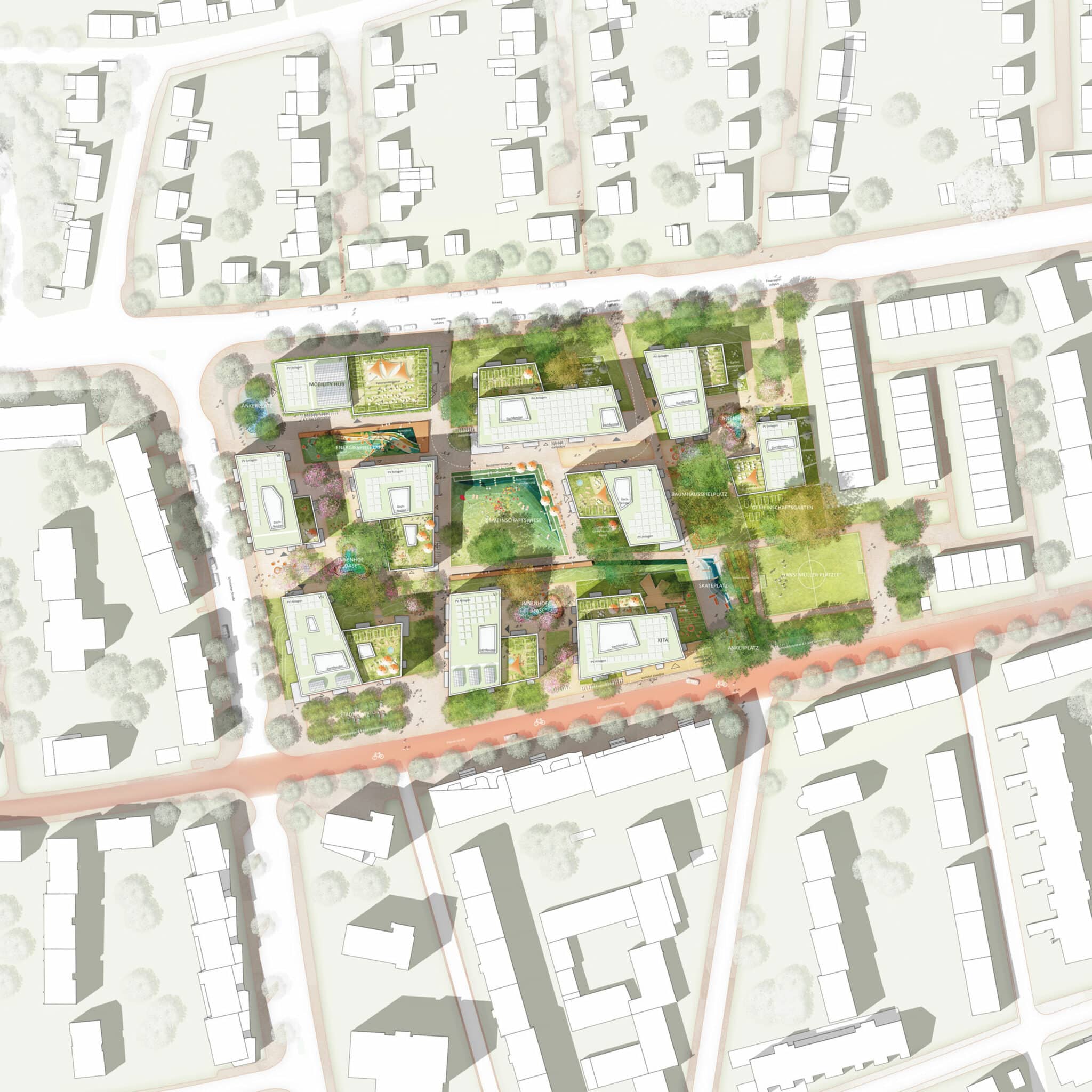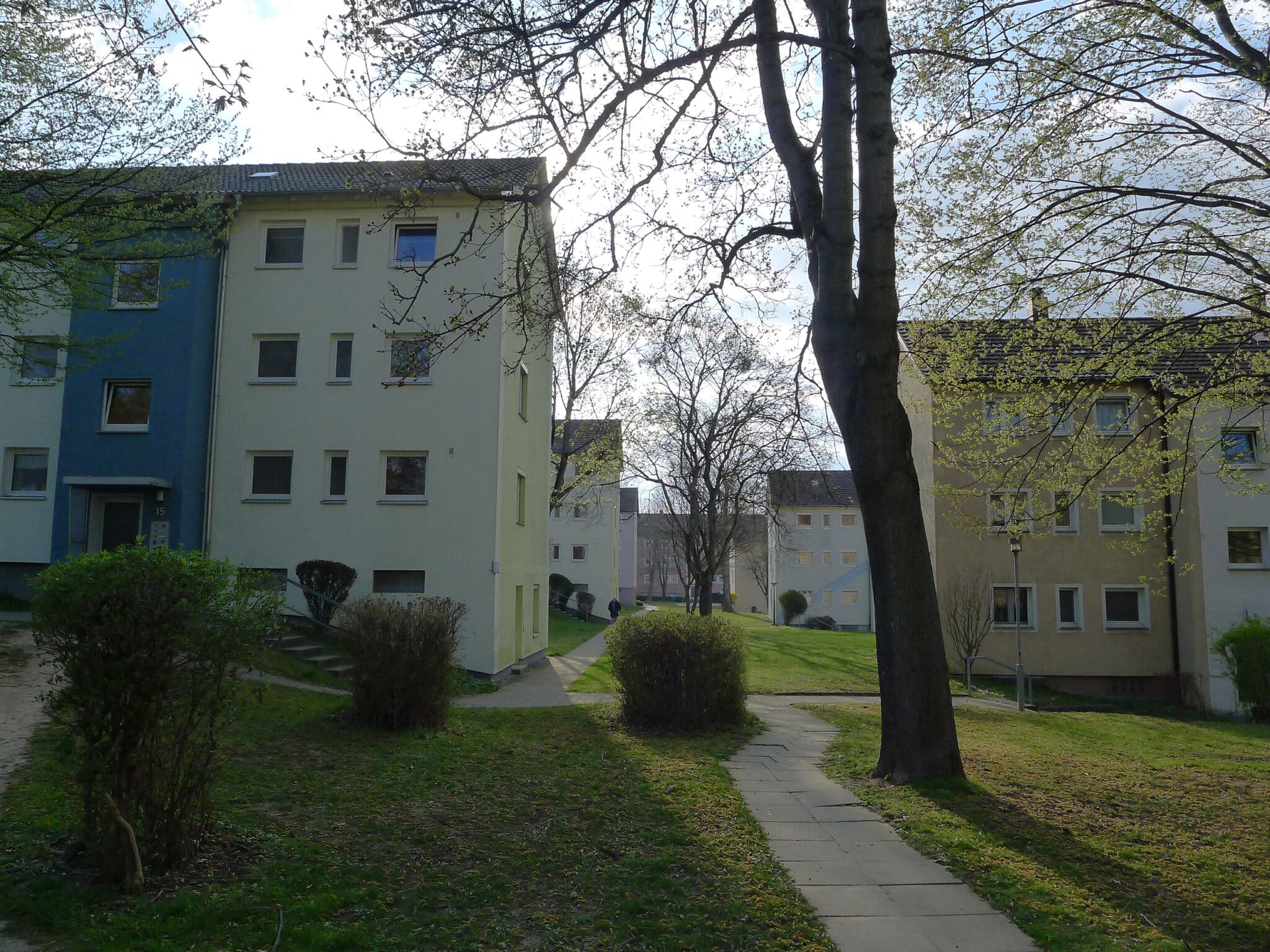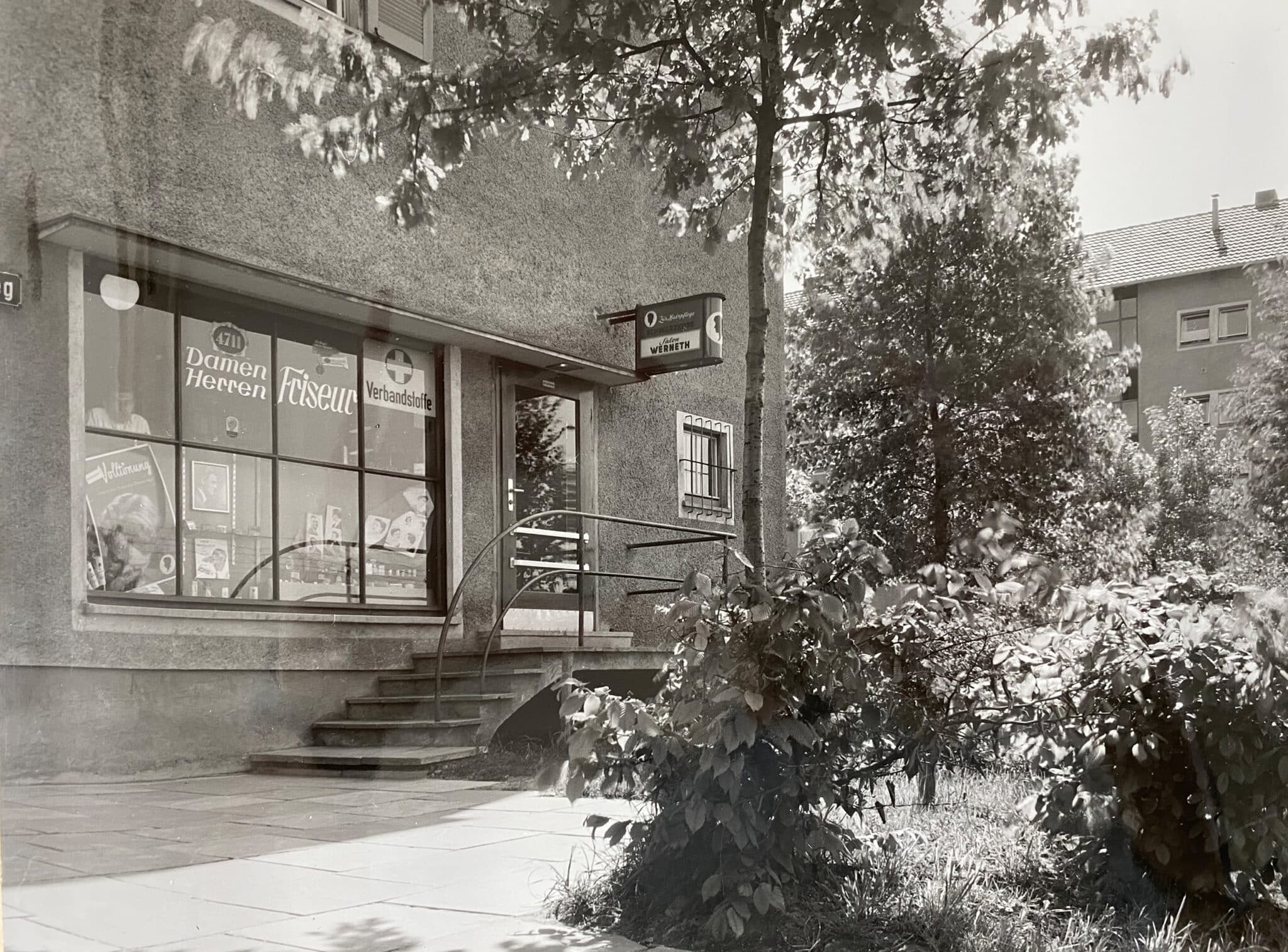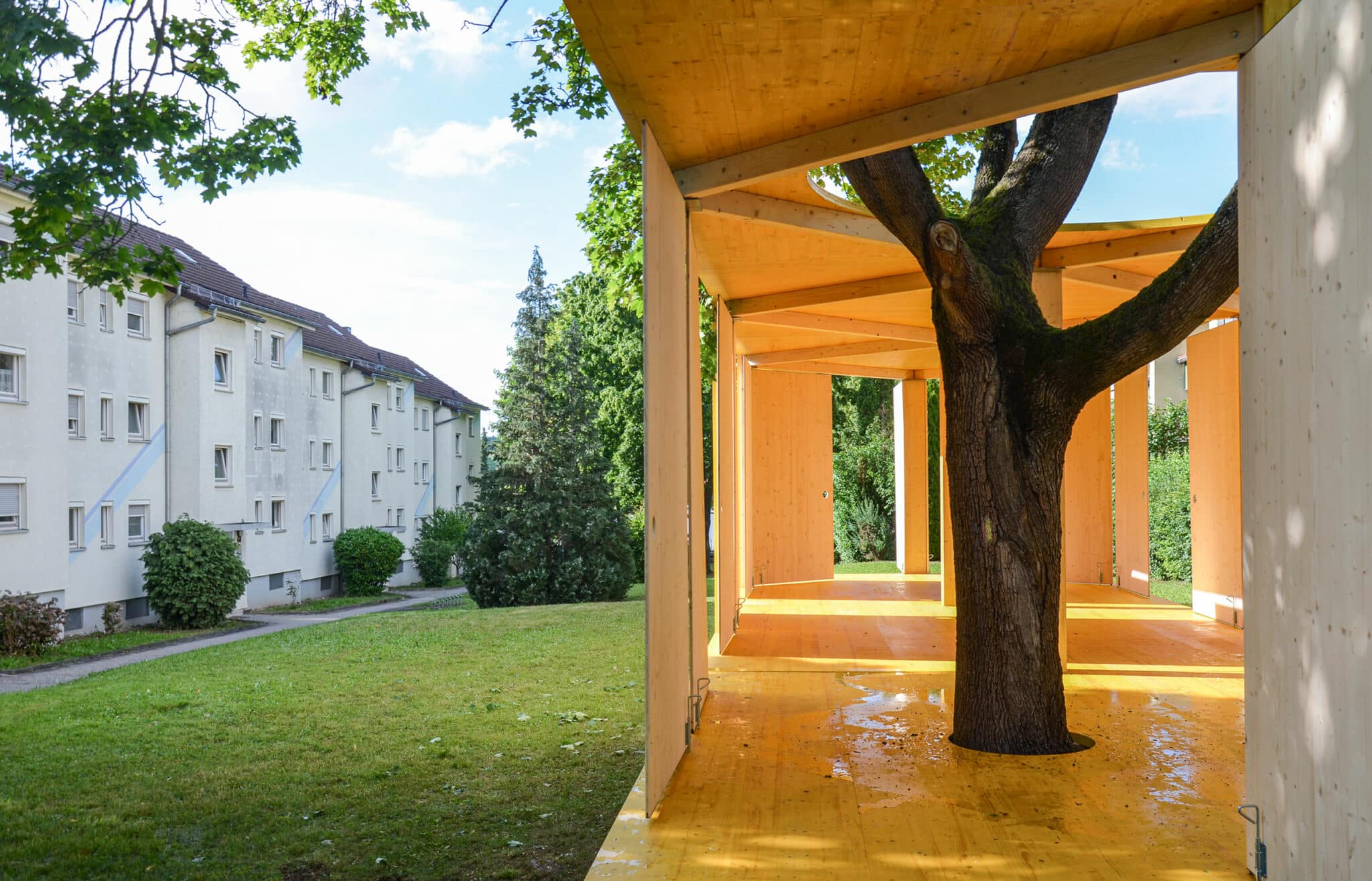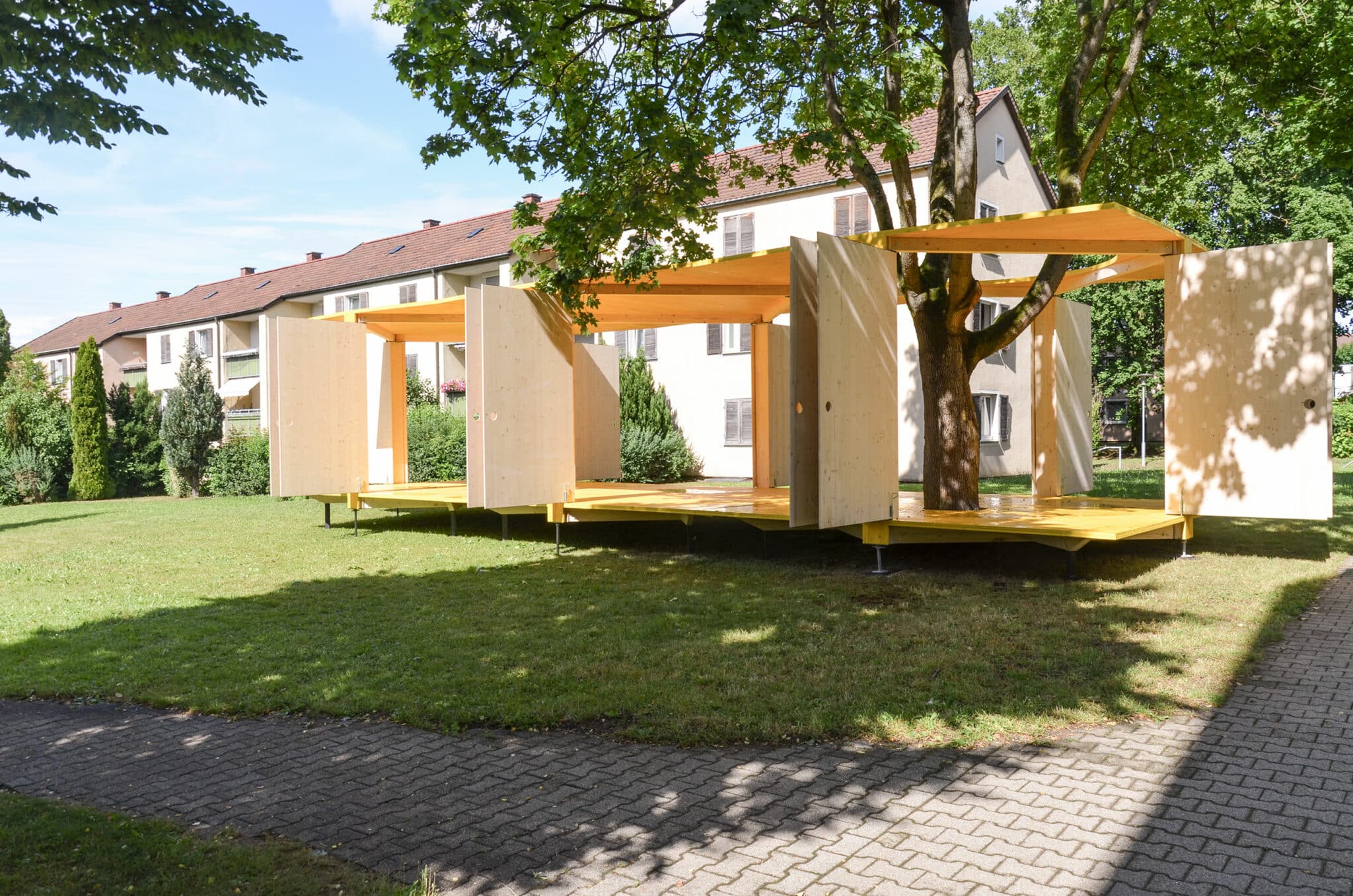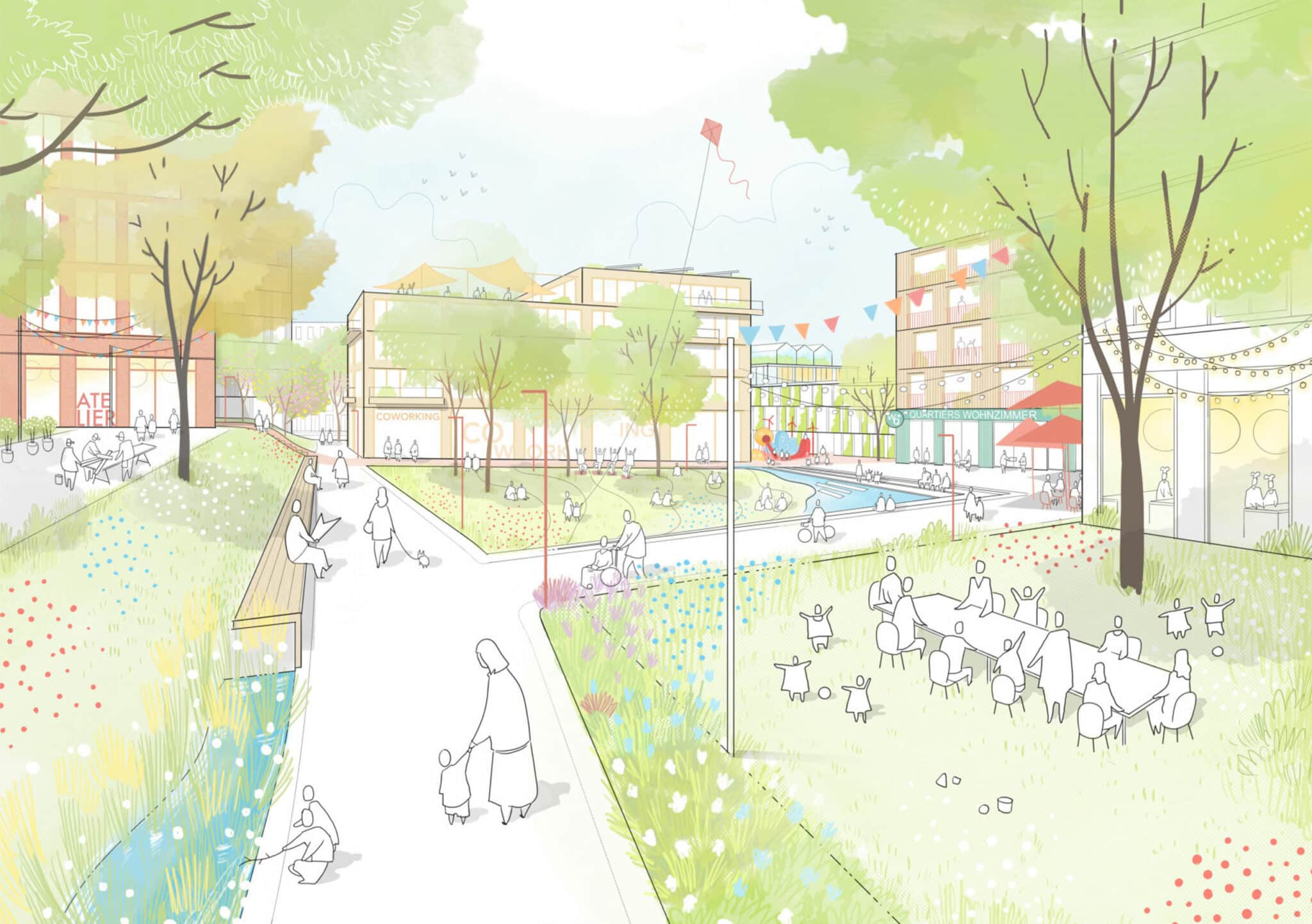Press Release
IBA’27: Two new projects from Stuttgart and the Region
Quartier Hangweide in Kernen im Remstal (Hangweide Neighbourhood in Kernen im Remstal) and Reallabor Wohnen Stuttgart-Rot (Stuttgart-Rot Real-Life Housing Lab) announced as official projects for the International Building Exhibition
The International Building Exhibition 2027 StadtRegion Stuttgart (IBA’27) has included further proposals as official IBA’27 Projects. Two major neighbourhood projects have been added to the list. In Kernen im Remstal, a small municipality in the east of Stuttgart, the Hangweide site is to be used to create an inclusive model neighbourhood as an ‘urban village’ for more than 1,000 residents. And in Stuttgart’s Rot quarter, two housing cooperatives are developing a high-density neighbourhood with a good social mix and a vast range of different types of housing. For both proposals, the project initiators worked very closely with the IBA’27 team to refine the qualities to a level where they have great potential as ground-breaking exhibition locations for the IBA presentation year 2027. This was confirmed by the international board of trustees as well as the supervisory board of IBA’27, which signed off on the inclusion of the proposals as IBA’27 Projects. As a result, there are now 16 official IBA’27 Projects in total.
»The neighbourhood in Rot and the Hangweide project enrich our project portfolio with their very specific qualities and will allow us to develop an exhibition by 2027 that garners international attention«, says Andreas Hofer, Artistic Director at IBA’27. »Ultimately it’s about the question of how we want to live together as an urban society in the 21st century. If we work closely with the project initiators to continue our work with courage and consistency, I am very optimistic that we can showcase genuinely innovative and new answers to this question by 2027.«
An urban village for Kernen im Remstal
At Hangweide, a roughly eight-hectare site in Kernen im Remstal formerly used by the social welfare organisation Diakonie Stetten, a project consortium is developing a new neighbourhood for more than 1,000 people. After extensive public consultation, the project consortium held an urban planning competition together with IBA’27. The Stuttgart-based firm UTA Architekten und Stadtplaner along with SIMA | BREER Landschaftsarchitektur from Winterthur were announced as the competition winner in the autumn of 2020. The concept provides for a high-density ‘urban village’ as the overarching principle, which will combine urban and village life with different forms of housing and ownership structures. The concept itself has two main premises: urban planning with classical elements of a village combined with a modern organisational structure for the neighbourhood. The objective is to develop a model for a new way of living together in an urban space that is based on solidarity and community. There will also be areas for everyday needs, business and community facilities, integrated in generous public open spaces. The topic of inclusion from the history of Hangweide is to be linked to actively promoting a sense of community. A neighbourhood organisation set up as a cooperative association is to take over the organisation and running of the new village community. In addition, there is an ambitious concept for energy, mobility and water management.
»We are delighted that the IBA’27 supervisory board is in favour of including our Hangweide neighbourhood project in the IBA’27«, says Kernen’s mayor Benedikt Paulowitsch, representing the Hangweide project consortium. The consortiumcomprises Kernen municipality, LBBW Immobilien Kommunalentwicklung and the Kreisbaugruppe for the Rems-Murr district. »We are convinced that the Hangweide project will become a model that influences the entire region in a multitude of ways.« According to Paulowitsch, the response to the call for entries for the urban planning competition showed that the project community was collaborating on something big. As a large development area in the Rems-Murr district, Hangweide could be the next building block in the district’s strategy for creating urgently needed housing, he said. The site offers the possibility to make topics for the future a reality in a way that chimes with the climate protection goals of the municipality and the district. Examples include innovative mobility and sustainable energy concepts.
Andreas Hofer explains: »The motif of an urban village marries the rural roots of the Remstal valley with the urban qualities of the Stuttgart metropolitan area. The project initiators also recognised that a neighbourhood of this size needs a good system for running it, and the idea of the neighbourhood cooperative association was born. All of these aspects combine to make Hangweide a pioneering project that can become a model for many municipalities in Baden-Württemberg and beyond.«
Regeneration by housing cooperatives in Stuttgart-Rot
In Rot in the north of Stuttgart, up to 280 housing units are to be created from 2024 on a site around two hectares in size within an existing settlement dating from the 1950s. The two project initiators Neues Heim – Die Baugenossenschaft eG and Baugenossenschaft Zuffenhausen eG (BGZ) collaborated with IBA’27 to organise an urban planning competition that met with a huge response internationally, with more than 100 offices from all over the globe competing to take part. First place went to ISSS Research Architecture Urbanism from Berlin together with topo*grafik from Marseille for a project that provides for ten large buildings grouped around a network of small squares and a central ‘shared green area’. The ground floors offer scope for business and community facilities, with a wide variety of housing types planned for the space above. Based on the concept, the buildings will be constructed as wood-based hybrids and the neighbourhood will have a local, sustainable energy supply. The regeneration is intended to help move forward with a neighbourhood which facilitates intergenerational living that is inclusive of people with disabilities and care needs. To involve the people living locally in the further planning phases, a ‘lab stage’ (‘Laborbühne’) has been set up in the middle of the neighbourhood with funding from the State of Baden-Württemberg. The plan is to use the stage to host events and campaigns on topics like affordable housing, community co-living and participation and inclusion.
Bernd Heinl, Technical Head of BGZ, says: »For us, becoming an IBA’27 Project means recognition for our ambitious goals of taking an existing post-war neighbourhood from the 1950s and – rather than simply redeveloping it – reinventing it with high architectural quality and diversity, different forms of housing, the inclusion of community facilities, attractive open spaces, an innovative energy and mobility concept and much more besides.« Gisbert Renz, Technical Head of BG Neues Heim, explains: »When the gathering of projects for the IBA’27 Network started in 2018, there was a call to reimagine the future of the Stuttgart Region and to dare to experiment. The fact that our proposal was chosen as an IBA’27 Project shows just how innovative housing cooperatives can be. We see this award as a special opportunity and challenge for the whole of Stuttgart-Rot.«
»The project in Rot epitomises how exemplary processes can be used to extend and renew housing stock from the 1950s and 1960s in a socially responsible way that takes account of climate change«, explains IBA’27 Artistic Director Andreas Hofer. »Large portfolio holders have the advantage that they can develop holistic strategies which allow for renewal while still protecting affordable housing. The decision to demolish part of the stock was not taken lightly. More housing of a more diverse nature will be created in the medium term. What was once purely a residential area is to become a vibrant neighbourhood that brings together community housing and working models, low-barrier housing and care offerings with diverse typologies, high-quality open space and ecological construction.«
Around 150 projects have been entered for IBA’27 since the call for projects was put out in October 2018. Almost 90 entries that take a bold approach to the future of building, housing and working in the Stuttgart City Region have since been included in the IBA’27 Network. Together with the IBA’27 Forum – the open discussion platform for the IBA – a wide network of proposals, people and organisations has thus been established that enriches IBA’27 going forward to the exhibition year.
The interdisciplinary team at IBA’27 uses the network to engage with entrants to identify proposals with special potential for ambitious further development by 2027. The proposals are announced as IBA’27 Projects by the supervisory board on recommendation from the international board of trustees. The projects then receive intensive support from the IBA’27 Team. Proposals submitted by the end of 2021 can still become an IBA’27 Project. The IBA’27 Network, IBA’27 Projects and IBA’27 Neighbourhoods will ultimately result in a curated exhibition that will make internationally relevant ideas for the future tangible for the visitors in 2027.
